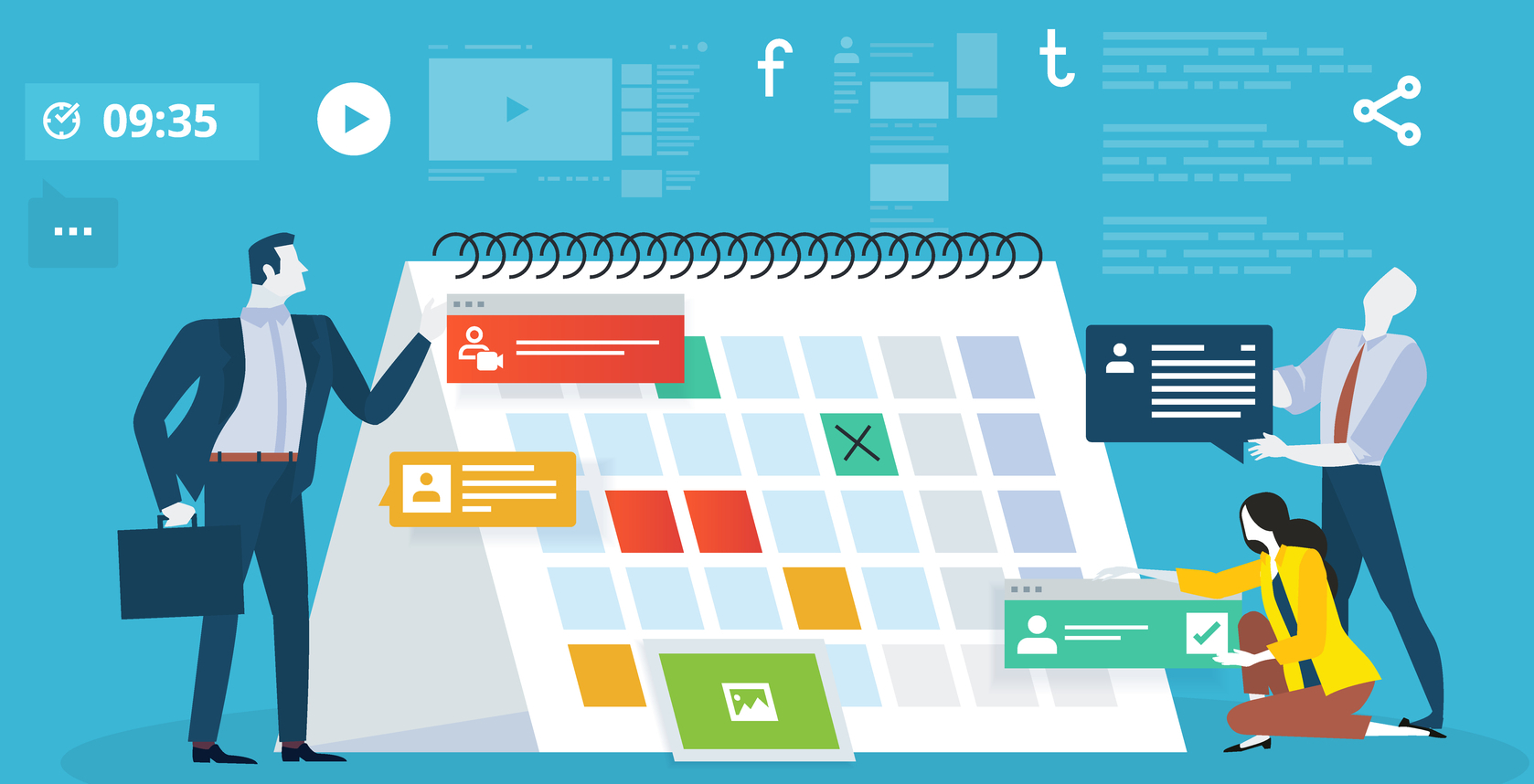
Today’s customers tend to perceive a company’s services as a whole. For a customer, a service and all communications around it mean a single end-to-end process, and businesses have to integrate into this paradigm. To stay competitive and create better customer experience (CX), a business must ensure that a customer can reach it via any of modern and traditional communication channels, easily blend these channels and deliver a consistent service regardless of the selected channel. This idea is best expressed by the term omnichannel customer engagement.
Why is it important to ensure true omnichannel customer engagement at a modern contact center?
The answer is simple: omnichannel support enables consistent services via various channels and quicker response to customer needs, fostering an effortless and positive customer experience. The way how a business connects and responds to its customers often defines customer loyalty and retention. The Aberdeen Group claims that companies providing consistent service quality across multiple channels demonstrate an 89% customer retention ratio, while the market survey by Dimension Data proves that contact centers supporting up to nine channels are the new standard today, and the number of channels is expanding all the time.
“Contact centers supporting up to nine channels are the new standard today”What does the term omni-channel really mean? What are its main features and what contact centers can call themselves truly omnichannel?

First of all, in a truly omni-channel contact center, a customer can address an agent using any online or offline channel that he/she finds the most convenient at a particular moment.
Secondly, all channels are smoothly integrated. This means that a customer can easily switch between different channels, even while solving the same issue. For example, a support chat can be integrated into the company’s mobile application that should also provide an option to make a call directly to the customer service manager with the required skills, without having to pass through the identification procedure or listening to an irritatingly long IVR menu.
Thirdly, an omni-channel contact center maintains the whole history of all customer contacts via all supported channels, which is available via a single customer file.
Finally, in an omni-channel contact center, agents have consistent instructions or scripts for communication via different channels, which makes transitions between channels unperceivable for a customer, who enjoys consistent and seamless services regardless of the selected channel.
Every generation has its own preferred channels. No doubt, digital is becoming a dominant communication technology today and is expected to cover half of the customer interactions by 2019. Nevertheless, the role of traditional voice channels and personal communication is still very high – according to Deloitte’s Global Contact Center Survey 2017, voice channels generate 64% of all customer contacts today. Moreover, depending on circumstances and the purpose of communication, the same customer can choose to use different channels. For example, a customer can prefer to address a contact center over the phone at home or in case of emergency and text it via a web chat when traveling or at work. The choice of the preferred channel also varies depending on a customer’s social and cultural background.
Channel diversity has become vital to meet customer expectations and follow the ever-changing customer behavior. Contact centers have to both embrace modern communication media (social media like Twitter, Facebook, VK; messengers like Facebook, Telegram, VK; smart apps, video chats, IVR, RPA, web chats, SMS texting) and, at the same time, constantly improve their services for the people who still prefer to contact companies over the phone, by email or personally.
The support of separate channels is far from being enough. An advanced contact center must not only support all of the available communication channels but to be able to blend them (for example, switching from an AI chat bot to a live chat), make transitions between channels seamless, effortless and simple for a customer and even allow a customer to address a business using two or more channels simultaneously. For example, a customer can consult a contact-center agent via the phone or a web chat and simultaneously fill in an online application at the company’s website, using the collaborative browsing capability. By the way, this ability to flexibly integrate channels – both voice and non-voice, online and offline ones – and support a single customer view makes one of the main differences between multi-channel and omni-channel enablement.
“Instead of covering all possible communication channels, a company would rather focus on quality support of those channels that are most popular in its target markets.”
It is true that today each vendor of software solutions for contact centers claims that omni-channel is not an option anymore and that its software certainly supports all modern channels. Nobody will honestly admit it, but industry insights demonstrate that most vendors often use the term omni-channel to disguise a more obsolete multichannel approach, and there is a long way between the two.
“Most vendors often use the term omni-channel to disguise a more obsolete multichannel approach.”
It is not the number of channels that matters, but the quality of their integration. If a vendor supports multiple or even all modern channels (which is rare enough due to different market demands in different countries), but these channels are not integrated and provided as siloed applications (or separate solutions for email, chat, SMS, etc.) built on top of a legacy voice system, this is not omni-channel. If an agent cannot view the history of all customer interactions via different channels in a single customer file to reduce needless repeated questions on the same issue, it is not omni-channel. If a customer makes a call directly from his/her mobile application and has to pass the authentication procedure or listen to an endless IVR menu instead of immediately contacting the required specialist, it is also not omni-channel.
Unfortunately, in spite of the rapid advent of emerging digital technologies and futuristic forecasts of researchers, many contact-center systems still lack the most vital technological features. 25.4 % of businesses that took part in the Global Contact Centre Benchmarking 2016 by Dimension Data reported a lack of required technologies caused by immature contact center solutions, 24.9% of respondents mentioned solutions created in silos as their biggest technological challenge, and 55.6 % complained of inflexibility due to the use of legacy software systems. Other surveys show that most of the enterprise-class contact-center solutions still do not support many of the modern communication channels like messengers, social networks, etc., while cloud solutions mainly focus on non-voice channels.
Many vendors do not provide pre-integrated agent scripting facilities and reporting tools or offer them as separate products. A lot of solutions run on expensive proprietary software or hardware platforms and have difficulties with customization or with the support of large-scale businesses.
For the well-established vendors with a long history and a good reputation in the market, it is hard to quickly re-engineer their systems that were created decades ago and are based on obsolete technologies. To meet the growing market expectations and to reduce their expenses, many vendors prefer not to create new systems from scratch but to improve their current solutions that were not originally designed for modern reality. Adding new digital channels to such legacy solutions is always difficult and expensive.
On the other hand, small newcomers often specialize in one particular channel and they do not have resources to embrace the whole new omni-channel world of modern contact centers. Such vendors are ready to customize their solutions to meet customer expectations, but it requires time and investment and does not result in creation of a universal out-of-the-box product capable to cover all aspects of the contact-center business.
Some technological challenges come from the customers themselves. They include securities issues associated with the protection of personal and financial data from fraudsters (for example, in the banking industry), difficulties with the integration of contact-center solutions with legacy core systems, reluctance to invest in the development of contact-center technologies, and even issues related to the lack of skilled agents who could professionally manage communications via emerging channels.
Businesses that are interested in truly omni-channel support of their customers should consider relatively young companies that initially created their solutions for modern reality. Such solutions are based on advanced architectural principles, use software-based IP PBX systems, ensure flexibility and – the most important – they were specially designed to support digital communication channels.
To create an omni-channel environment, companies use modern tools that support channel integration, provide a single data warehouse for all customer data, ensure that a customer is recognized no matter which channel he or she uses and maintain the history of all customers interactions. With these tools, a customer service agent can track the whole history of all customer contacts via all available channels and the status of every separate contact. Usage of such technologies as agent scripting, recording of agent interactions, ongoing quality analysis, integration with third-party systems (CRM, core banking, ERP, WFM, payment gateway, Active Directory, etc.) and others also helps to deliver seamless, streamlined and efficient customer services. Modern omni-channel platforms, like SoftBCom Omni-Channel, support all of these technologies and provide a reliable platform for all emerging communication media. In addition, such foresighted vendors generously invest in the implementation of AI and RPA technologies and personalization of services in their contact-center solutions.
“Customer service agent can track the whole history of all customer contacts via all available channels and the status of every separate contact.”
SoftBCom has always been at the cutting edge of the contact-center software industry. The company is a six-time winner of the Crystal Headset® CCG Call Center Award and is listed in Gartner’s Magic Quadrant for Contact Center Infrastructure (Honorable Mentions).SoftBCom Omni-Channel is a modern communication platform for centralized processing of inbound and outbound customer contacts via all traditional and emerging digital channels: phone, email, SMS texting, live web chat, video chat, IVR, messengers (Facebook, Viber, Telegram, VK), smart apps, social networks (Facebook, Twitter, VK), self-service / assisted self-service channels, WebRTC and others. The solution supports cross-channel interaction, channel blending, collaborative browsing and transition between channels during the processing of customer contacts. Significantly, the support of digital channels was initially designed as part of the solution architecture, on an out-of-the-box basis, which allows the company to implement any new channels quicker than other vendors would do.
Contact centers that run on the SoftBCom solution use a common ACD to assign incoming calls to specific resources (agents) based on pre-set routing rules and agent skills. The system supports a general pool of agents and ensures flexible distribution of messages between agents based on the speed of each specific agent. The solution pre-processes all incoming contacts, which includes customer identification in any channel and categorization of queries before assigning them to a specific agent. The same agent can process queries from any channel, switch contacts to other queues, cover several parallel sessions, and be engaged in multiple projects at the same time.
To ensure a seamless customer experience and truly consistent and effective services, the solution maintains a centralized history of all customer interactions via different channels, supports common agent scripts for all channels, and provides pre-set response template and a single knowledge warehouse covering all standard issues and queries for well-informed, rapid and accurate response to customers’ issues and queries. At the same time, flexible reporting tools allow analyzing the performance of each specific channel or agent for ongoing improvement of customer services.
SoftBCom Omni-Channel can be part of the integrated SoftBCom Contact Center solution – a broad ecosystem of modern software components that support every aspect of the contact-center business – or be implemented as a standalone solution with flexible tools for integration with third-party solutions.

Remote or hybrid work is a form of work organization that is at the same time both popular and enforced ...

WhatsApp first provided its messenger's API in 2019, enabling the connection of this popular channel wit...